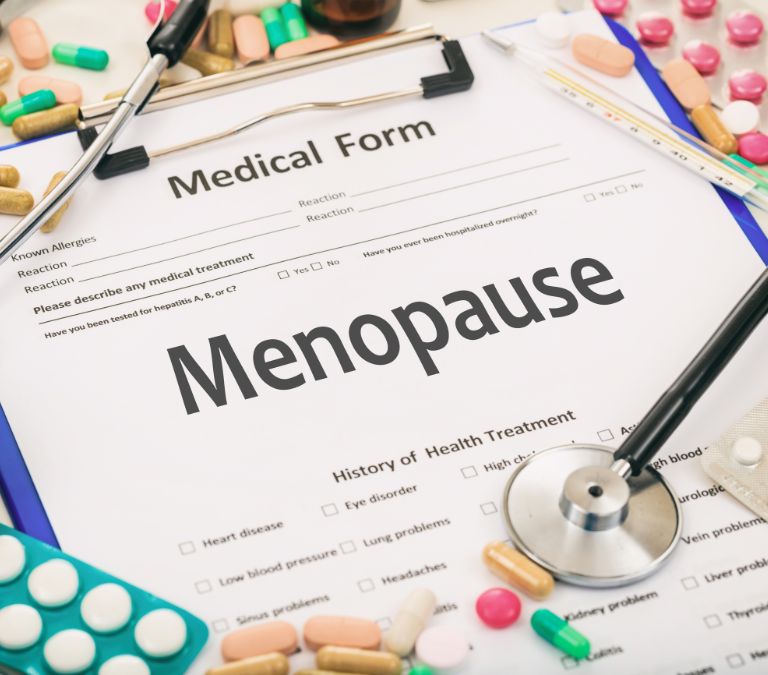What Is Menopause?
For women, menopause is one of the most significant medical events. It is a natural biological process and a period marking the end of a women’s menstrual cycle. It is also the absence of menstrual periods for a continuous period of 12 months, which occurs due to the cessation of the functioning of the ovaries.
Menopause is also used as an all-encompassing term to describe the biological changes women go through just before or after the stop of menstruation or a term to mark the end of the reproductive years. One of the more important biological effects of menopause is that it prevents the occurrence of pregnancy. The onset of menopause prevents the ovaries from releasing the eggs or ova needed for fertilization.
Like most biological processes, menopause does not occur suddenly or overnight. Instead, it is a gradual process. There is a period or window called the perimenopausal transition period in which this gradual cessation of ovary functions occurs.
For most women, the symptoms of menopause start developing about 48 months before their last menstruation. These menopausal symptoms can continue for up to 48 months after the last menstruation. Some women experience these symptoms for up to 12 years following their last period.
The experience during this period is different for each woman due to the variations in makeup, environment, and other biological factors. For most women, the menopausal transition period is triggered by fluctuations in the length of the menstrual cycles. It culminates in the final cessation of menstruation. These conditions are triggered by changes in the hormonal balance in the body.
One of the most peculiar things about menopause as a biological process is that it cannot be predicted using laboratory tests. There are variances in the age at which a woman will experience menopause. These variances hold even for women sharing similar genetic factors or environments. Some women experience menopause as early as age 30, while some will not experience menopause until well into their 60s. Nevertheless, the average age for the onset of menopause is 51 years old.
The onset of menopause is also hard to predict because there is no scientific evidence suggesting a correlation between the age of menopause onset and the age at which a woman started menstruating. Generally, the onset of menopause is marked by different symptoms, including hot flashes, mood swings, urinary and vaginal symptoms, and abnormal vaginal bleeding. Menstruation can also lead to complications such as heart disease and osteoporosis.
Advances in medical innovation and technology have, over the years, led to an increase in the number of women seeking treatment for menopause. Available effective treatments for menopause include hormone therapy, laser therapy, platelet-rich plasma injections, and lifestyle adjustments.
These treatments have different risks and benefits. Hormone therapy involves the injection of estrogen or progesterone into the vaginal tissues to simulate their availability for bodily functions, especially related to the reproductive system and body metabolism.
Menopause has also been defined in the various phases that make up this particular biological condition. These are the perimenopause, menopause, and postmenopause phases. These phases are marked by varying conditions and a steep decline in estrogen levels in the body.
Perimenopause refers to the period around menopause or the menopausal transitional period. In contrast, postmenopause refers to the time after menopause has occurred. Menopause is an important aspect of women’s health and understanding. It has been one of the main focuses of improving feminine health. This article discusses everything you need to know about menopause.
What are the symptoms of menopause?

Like other biological processes, the onset of menopause is marked by different symptoms that emerge in physical, hormonal, and psychological changes in the body. However, differences in genetic makeup and other biological factors mean that these symptoms vary between individuals leading to unique experiences.
Also, the symptoms of menopause are much more severe or intense when the perimenopausal period is short. This gives the body less time to adapt to the biological changes triggered by the onset of menopause.
The common symptoms of menopause are dryness of the vagina, anxiety, depression, reduced sex drive or libido, reduced concentration, weight gain, insomnia, increased urination, reduction in the fullness of the breasts, urinary tract infections (UTIs), dryness of eyes, skin, and mouth, soreness or tenderness of the breasts, racing heart, headaches, reduction in muscle mass, reduction in bone mass, stiff or painful joints, hair loss or thinning of hair in certain areas and increase in hair growth in the upper back, neck, chest, and face.
All these conditions are not likely to manifest in a single individual because of genetic differences and environmental and biological factors. However, the severity and intensity of these symptoms will be increased when underlying conditions such as ovary disease, hysterectomy, and cancer are present. In addition, smoking, poor diet, and lack of exercise are lifestyle choices that can also increase the duration and severity of menopausal symptoms.
When does menopause begin?
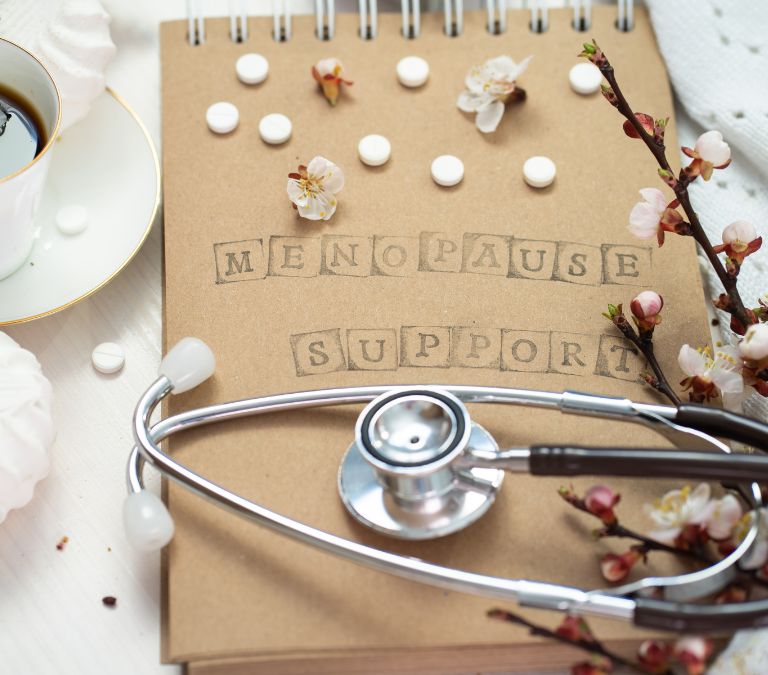
The question of when menopause begins is mainly about the age at which menopause sets in a woman. There is no definite answer to this question because the onset of menopause varies from one individual to the other. While there is a widespread belief that there is a correlation between the age when a woman starts menstruating and the age marking the onset of menopause, there is no scientific evidence backing this thinking.
Menopause can begin as early as 30 and may not commence until the age of 60. However, most women reach menopause between the ages of 45 and 55. Therefore, the only rule of thumb that can be followed when determining the onset of menopause is that women tend to undergo menopause at a similar age as their mothers.
Early menopause symptoms
Early menopause is an abnormal menopausal condition. For most women, the ages of 45 to 55 often mark the beginning of menopause. However, some women experience menopause before the age of 40. This is referred to as early menopause. This condition has been defined to occur when a woman experiences premature ovarian insufficiency before she clocks 40 years old.
While the symptoms of menopause generally form the self-diagnostic tool for most women, several tests can be carried out if a case of early menopause is suspected. Hormonal tests can be carried out for hormones such as Anti- Mullerian hormone (AMH), Follicle-stimulating hormone (FSH), Estrogen, and Thyroid Stimulating Hormone (TSH).
The symptoms of early menopause are similar to those of normal menopause. However, early menopause can be said to start when a woman starts experiencing irregular periods or periods that are shorter or longer than normal for that particular woman. This fluctuation is the main symptom of early menopause.
Other common symptoms of early menopause are spotting, increases in the length of time between periods, insomnia, night sweats, hot flashes, heavy bleeding, and periods lasting longer than one week. Women experiencing early menopause also experience slowed body metabolism and a faster rate of weight gain.
Like normal menopause, early menopause can also trigger psychological and emotional changes in women. Women experiencing early menopause experience mild depression, anxiety, and mood swings and are generally more irritable. They are also more likely to suffer from occasional memory lapses.
These conditions result from the stresses they face when their body needs to adapt to the changes caused by changes in hormonal balances, especially estrogen and Thyroid Stimulating Hormone (TSH). The sexual dysfunction also increases the stress levels they face, especially when they still have spouses or partners with whom they are still active sexually.
Causes of early menopause (implications for those without children)
Several conditions can cause early menopause, or it can be spontaneous. When early menopause is spontaneous, there is no known cause for the condition to be linked. When a particular case of early menopause is deemed non-spontaneous, the causes can be linked to surgery, lifestyle habits, genetics, infections, and underlying medical conditions.
Early menopause can be caused by surgeries involving the removal of the ovaries or the uterus (hysterectomy). The removal of the ovaries stimulates the hormonal balance of the body to resemble the actual cessation of the functions of the ovaries. The surgical removal of the ovaries- also referred to as oophorectomy- can lead to immediate menopause because the ovaries are responsible for the production of progesterone and estrogen.
These two hormones regulate the menstrual cycle, and their reduction in the body accelerates menopause. On the other hand, hysterectomy is less severe in causing early menopause and takes longer before its effects set in. This is because hysterectomy removes only the uterus leaving the body to release eggs and produce estrogen and progesterone.
Early menopause can also result from a side effect of radiation or chemotherapy treatment for cancer. Other medical conditions that can stimulate changes in hormonal balance leading to early menopause include HIV, AIDS, autoimmune diseases like rheumatoid arthritis and Turner’s syndrome, and Fragile X, which are genetic or chromosomal abnormalities. Early menopause can also be caused by infections such as mumps.
One of the challenges caused by early menopause is that this condition has important implications for people who are yet to have children. Infertility remains an important complication of early menopause. This is because early menopause results in basically a cessation of ovary functioning, which means that eggs or ova necessary for the development of pregnancy are not produced by the woman’s reproductive system again. As a result, women suffering from early menopause and without children are less likely to conceive, except they treat early menopause with hormonal therapy.
Perimenopause symptoms
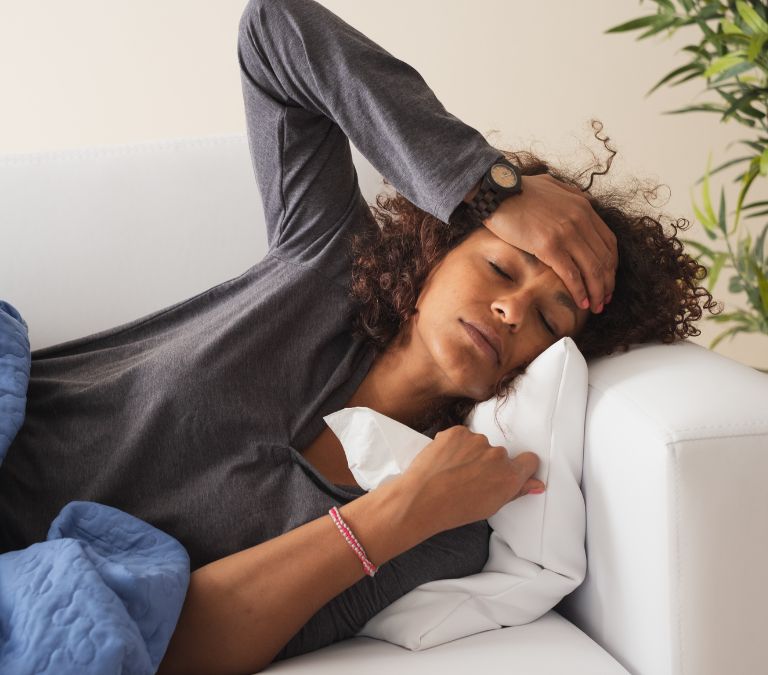
The perimenopause phase of the female reproductive cycle is characterized by significant changes in hormonal balances in the body. At this stage- usually between the mid- 30s and early 50s- there is a general decline in the amount of progesterone available in the body. At the same time, the balance of estrogen becomes highly erratic. The perimenopause stage can last for between four and eleven years.
There are a host of symptoms signaling the emergence of this stage. These include mood changes, irritability, anxiety, depression, headaches, changes in the menstrual cycle, sleep disturbances, heat intolerance, hot flashes, and weight gain.
At this stage, erratic mood swings, irritability and anxiety are symptoms that are psychological responses to the massive physical changes that the body is undergoing. Women who are still sexually active at this stage also find their low sex drive or libido strange.
They may develop anxieties about meeting the sexual needs of their partners or about sexual intercourse in general. They are also depressed because they experience less drive for the activities they derive pleasure from in the past. This is a result of changes in the body’s metabolism, which leads to low energy expenditure.
Another significant symptom of this stage is increased body mass or weight gain. The erratic balance of estrogen, which is one of the hormones responsible for appetite control, means there is an increase in the craving for fatty foods and a decrease in the metabolic ability of the body to utilize food substances. These combine to lead to significant increases in body weight. Body weight also increases during this period because most women lack the energy and drive to work- out due to hormonal imbalances.
The symptoms experienced during the perimenopausal stage are similar to those experienced during menopause, even though they may be of much lower intensity.
Postmenopause symptoms
During the postmenopause phase, the menopausal symptoms like menopause night sweats and hot flashes are significantly reduced in intensity or go away. The body has also adapted to the biological changes brought about by the hormonal imbalance caused by menopause. As such, there are fewer episodes of psychological changes. At this stage, the few lingering symptoms are caused due to the permanently low levels of reproductive hormones in the body.
The postmenopause stage is often the period after your last menstruation (normally 12 months after your last period). However, determining whether a woman is now in the postmenopause phase may require a check of hormonal levels through blood samples.
The symptoms of the postmenopause stage include occasional hot flashes and night sweats, sexual discomfort, vaginal dryness, depression, weight changes, changes in sex drive, and dry skin. These symptoms are carried over from the perimenopausal and menopausal stages. The postmenopausal stage also has much more specific symptoms. Some women in this stage suffer from urinary incontinence, insomnia, and hair loss. This stage is also marked by rapid loss of bone density resulting in bone fracture, osteopenia, and osteoporosis. In some cases, these symptoms can be so severe as to interfere with the performance of daily life activities.
How long does menopause last?
One of the most common questions people ask about menopause is its duration. Medically, menopause is not a process but a fixed point in time, even though this time cannot be known until 12 months after it had occurred. So, menopause is a point in time. However, menopausal symptoms start emerging years before menopause and may continue for many years after menopause.
The perimenopause stage is the period immediately leading to menopause. The decline in hormone levels and hormone imbalances set in at this stage. This stage also marks the beginning of irregular and erratic menstrual cycles and vaginal dryness, and hot flashes. This period can last for 4 to 11 years.
Postmenopause is the time following the occurrence of menopause. Once menopause has occurred, you will be in the postmenopausal phase for the rest of your life as a woman. The implication is that your hormone levels will remain permanently low, and you cannot get pregnant because the ovaries have ceased the production of eggs.
Menopause weight gain (Causes and remedies)
Menopause weight gain is one of the most common conditions women have to cope with during menopause. Weight gain has root causes in the hormonal imbalances triggered by menopause. During menopause, estrogen levels are low and, as such, lead to women eating more and becoming less physically active. This is because estrogen is one of the hormones that help in controlling body weight. Essentially, the depletion in estrogen levels leads to many changes in metabolism and the digestive system.
Generally, reductions in the amount of estrogen lead to a reduction in the body’s metabolic rate, which means that the rate at which the body converts stored energy into working energy is reduced. Also, during menopause, the depletion of estrogen reduces the capacity of the body to utilize blood sugar and starches effectively, thus making it harder for the body to lose weight while increasing fat storage.
Aside from the effect of the hormones- especially estrogen- menopause weight gain can be caused by lifestyle factors, aging, and genetics. Like other conditions associated with menopause, the way these factors will manifest is unique to each individual. Women will generally gain between 1 to 2 kg during the perimenopausal stage.
Weight gain is also more rapid for women who are already obese or overweight. Lifestyle factors also contribute to weight gain during menopause. Women who exercise are less likely to gain significant weight during menopause than women who do not exercise. The drive to exercise is quite low during menopause because menopausal women undergo changes that make them less active. So, naturally, there was a reduction in energy expenditure.
Several remedies have been demonstrated to work to reduce menopause weight gain. The dietary solution to this problem involves a significant reduction in the consumption of carbs. The essence of this reduction is to reduce the rate of increase in belly fat and consequently reduce the metabolic consequences of this belly fat. Another dietary solution is to increase the consumption of high-fiber diets. This especially includes the consumption of flaxseeds which have been shown to improve insulin sensitivity.
Non-dietary remedies to the problem of menopause weight gain are working out and ensuring ample relaxation. Menopause weight gain is slowed when you engage in strength training. This serves to increase body strength, maintain and build the lean muscles of the body, and improve general body composition.
Ample relaxation is also an effective remedy if you want to reduce the rate of menopause weight gain. This is because relaxation combined with a healthy and adequate sleep regimen help in keeping the body’s hormones in balance while also ensuring that the appetite for food is well-managed.
Menopause weight loss (Causes and remedies)
The symptoms of menopause are unique for each woman. While most women gain weight during this period, some lose weight. Menopause weight loss occurs as a result of loss of bone density. Bone density is an important component of the overall body weight accounting for between 7%- 15%. The decreased levels of estrogen in the body triggered by a cessation in the functioning of the ovaries lead to loss of bone mass.
During menopause, women can lose up to a quarter of their bone mass. This loss is especially concentrated in the wrists, hips, and spine bones. The implication of this for the woman’s health can be grave considering the structural functions of the bone and the skeletal system as a whole. Menopause weight loss concentrated in the bones increases the risk of developing bone fractures, osteopenia, and osteoporosis.
While weight loss may be considered a natural biological response to the changes in the body triggered by menopause, the health risks it brings about have led to the development of various treatment regimens. Medically, estrogen replacement therapy targeted toward treating other conditions such as vaginal dryness, bleeding after menopause, and menopause night sweats can reverse the menopause weight loss, but this is not sustainable.
The osteoporosis that develops due to menopause weight loss is not an entirely reversible condition once a progression has been made from osteopenia. However, treatments can be sought for the strengthening of bones. These include the consumption of foods that are high in calcium content.
Examples of these are spinach, fortified cereals, yogurt, and cheese. The regular intake of calcium supplements has also been demonstrated to be effective. For some women, consuming foods rich in calcium and taking calcium supplements must also be combined with the intake of vitamin D, especially when the body has difficulties absorbing calcium.
Bleeding after menopause
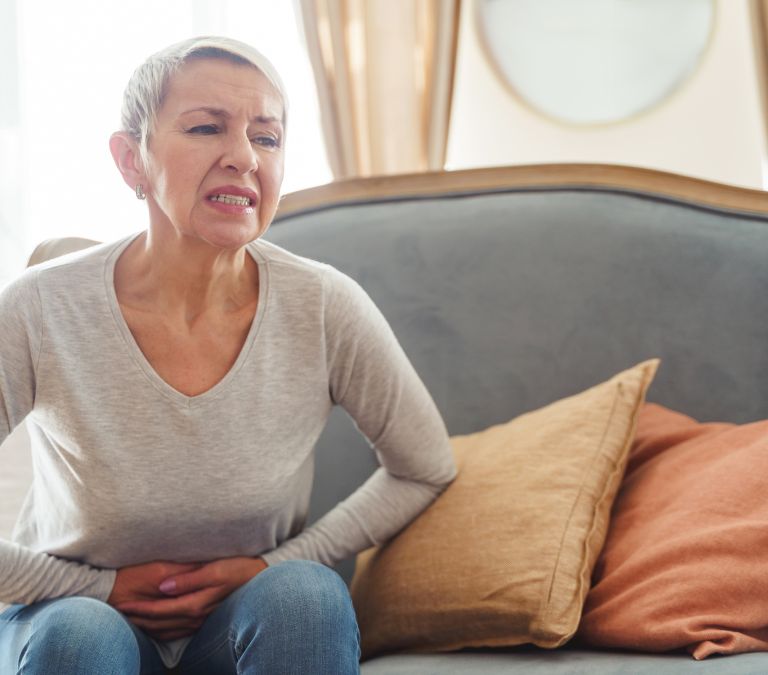
Bleeding after menopause is referred to as postmenopausal bleeding and can be described as when you experience bleeding in the vagina twelve months or more after your last menstruation. This bleeding can be heavy or light (in which case it is called spotting). Any woman can suffer from bleeding after menopause, which cannot be predicted. About 10% of women aged 55 and above experience bleeding after menopause.
If you experience this kind of bleeding, it can result from biological changes in the reproductive system triggered as a result of menopause. It can also result from non-cancerous growths called polyps or, more frequently, just a symptom of vaginal dryness. You should also know that this bleeding is a sure sign of uterine cancer in about 10% of women who experience bleeding after menopause.
Because there are different causal factors for bleeding after menopause, you may need to undergo a medical examination before jumping to conclusions and seeking treatment options. Examples of such tests include endometrial biopsy, a transvaginal ultrasound, hysteroscopy, and dilation and curettage (D&C).
One of the main causes of bleeding after menopause is polyps. Polyps are tissue growths that are non-cancerous and which show up or spontaneously grow in the cervical canal, uterus, or cervix. While not virulent in themselves, they can lead to conditions such as bleeding after sex, bleeding after menopause, and spotting.
Bleeding after menopause also results from vaginal atrophy. Vaginal atrophy is when the thinning of the vaginal tissue occurs because of low estrogen levels in the body as a result of menopause. This depletion of estrogen leads to the drying, inflammation, and thinning of the vaginal walls and causes frequent bleeding.
Two other causes of bleeding after menopause are endometrial hyperplasia and endometrial atrophy. Endometrial hyperplasia occurs as a result of the thickening of the uterine lining. Sometimes, the postmenopausal period may trigger estrogen production while the quantity of progesterone remains low.
This results in some cells in the endometrium becoming abnormal while the endometrium becomes thicker. This can lead to bleeding. Endometrial atrophy results from thinning of the uterine lining due to low levels of estrogen and progesterone in the body. This thinning can also cause bleeding after menopause.
There are several tested remedies for bleeding after menopause. These include estrogen therapy, progestin therapy, and hysteroscopy. Estrogen therapy includes any form or method for treating endometrial or vaginal atrophy. This includes oral pills, vaginal creams, vaginal tablets, and vaginal rings.
Vaginal cream, vaginal ring, and vaginal tablets are inserted into the vagina through an applicator and are designed to get a steady stream of estrogen into the vagina tissues. Progestin therapy is used to treat endometrial hyperplasia. It involves getting synthetic progesterone into the body through intrauterine devices, shots, pills, or vaginal creams.
Hysteroscopy is a surgical procedure used in treating bleeding after menopause by removing the polyps and the thickened parts of the uterine lining, which may have been caused by endometrial hyperplasia. Dilation and cutter age are also other procedures that can be used to correct bleeding after menopause.
This procedure involves sampling the contents and lining of the uterus to remove polyps and areas of the endometrial lining that are thickened as a result of endometrial hyperplasia.
It is important to note that bleeding after menopause can also be a complication of hormone replacement therapy (HRT) which was carried out to reduce menopausal symptoms. Therefore, there is a need to seek comprehensive medical advice before going for such therapies.
Menopause night sweats
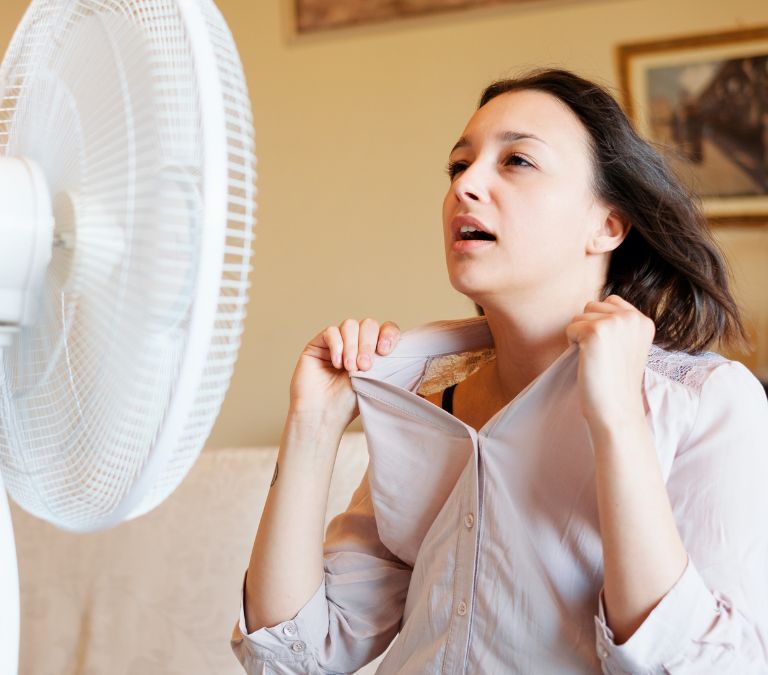
One of the very intense biological changes experienced by women undergoing menopause is night sweats which can sometimes be drenching. Even though night sweats have been associated with other medical conditions such as infections, cancer, diabetes, or the side effects of certain medications, they are much more common for women during menopause.
When you experience night sweats, a sudden heat wave spreads quickly around the body, leading to sweating, rapid beating of the heart, and the skin turning red. The sweat can be so much that your clothes and beddings will be soaked and your sleep disturbed. Frequently, a cold chill follows the night’s sweat. For most women undergoing menopause, menopause night sweats go away after some years. However, for others, it remains for the rest of their lives.
Menopause night sweats are caused by changes in body chemistry during the perimenopausal and menopausal stages. The main biological change occurring during these stages is that the ovaries significantly reduce the production of hormones like estrogen, progesterone, and in some cases, testosterone. This leads to irregularity in menstruation and the rapid expansion and contraction of blood vessels at night. This rapid expansion and contraction lead to the sudden heat waves that generate night sweats.
While night sweats are complications arising from biological changes in the woman’s body as a result of menopause, they can be treated using various remedies. Treatments for menopause night sweats can be split into two broad categories.
The first category includes all forms of hormone therapy. For example, to treat menopause night sweats, a woman can undergo estrogen replacement or estrogen with progestin replacement therapies. While these two forms of therapies can also help women deal with other problems associated with menopause, such as vagina dryness and bone loss, they cannot be used by all women and come with some risks. For example, hormone replacement therapy is generally unsuitable for cancer women. Also, hormone therapies come with the risks of inflammation of the gallbladder and the development of blood clots.
Non-estrogen treatments for menopause night sweats include the use of antidepressants and anticonvulsants. It also includes the use of drugs such as clonidine and megestrol. These drugs are used in treating a wide range of conditions (uterine and breast cancers, weight gain, anxiety, hyperactivity disorder, and high blood pressure). Still, they are also very effective in treating menopausal night sweats.
You can also try out non-drug treatments such as ensuring adequate ventilation in the bedroom, using a cool pack under your pillow, wearing loose-fitting cotton pajamas, and avoiding the use of substances such as caffeine, alcohol, and cigarettes.
Vaginal dryness during menopause
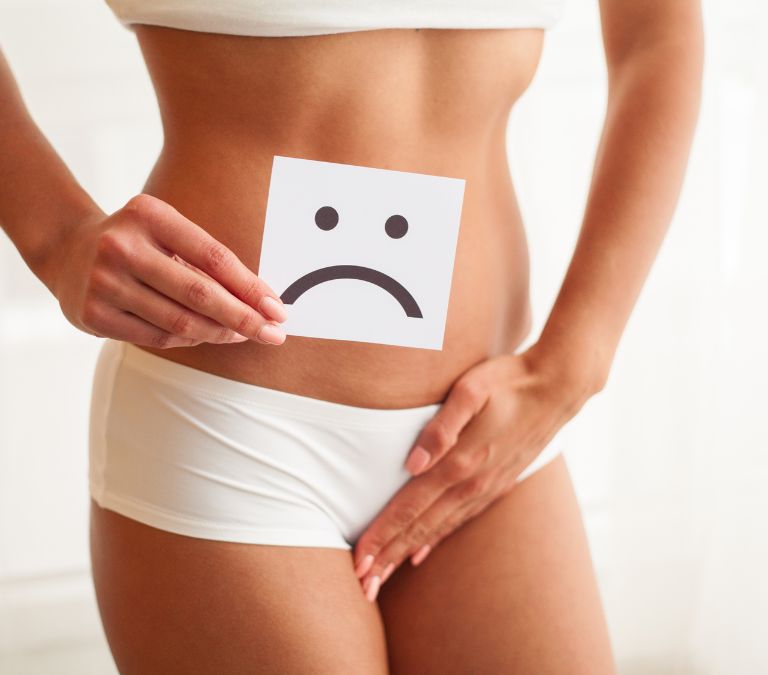
One of the major problems faced by women during menopause is vaginal dryness. Vaginal dryness is in itself one of the main symptoms of menopause. During menopause, the ovaries lose the capacity to produce estrogen, which is a hormone responsible for keeping the vagina lining elastic, thick, and, more importantly, lubricated. Vaginal dryness or vagina atrophy triggers other physical and psychological impacts of menopause.
It leads to painful intercourse, the loss of sexual desire, and the generation of anxiety before and during sexual intercourse. Vaginal dryness during menopause is a consequence of estrogen drop, which is the main cause. In the extreme, vagina dryness can also be accompanied by itching and general discomfort of the vagina, thus contributing to the irritability women feel during menopause.
The main remedy available for treating vagina dryness is topical estrogen therapy. This procedure stimulates the body to produce estrogen, which is no longer manufactured naturally because of the cessation of ovary functioning. Topical estrogen therapy takes three main forms; cream, ring, and tablet. In using the cream, an applicator is required. This applicator is used to get the cream into the vagina area.
This is done for 7- 14 consecutive days until otherwise directed by the physician. The tablet is also used once a day for 14 consecutive days then reduced to twice weekly until the physician directs that you no longer need it. Using the tablet also involves using an applicator (disposable) to insert the tablet into the vagina.
The ring is also one of the most common topical estrogen therapy used by women to combat vagina dryness during menopause. This method involves the insertion of a flexible and soft ring into the vagina. This ring then releases a steady and measured stream of estrogen directly into the vagina tissues and lining. However, for this method to be effective, the ring needs to be replaced after 90 days.
Another commonly used remedy is taking hormones in the form of pills. Generally, taking the pills is more effective than topical estrogen therapy regarding the amount of estrogen produced. These remedies try to address the root cause of vagina dryness by stimulating the body to produce estrogen for lining and lubricating the vagina.
Do men go through menopause?

Another very common question about menopause is whether there is anything like male menopause or, more simply, do men go through menopause? Yes, men go through menopause, but it is more correctly termed andropause. For males, menopause or, more accurately, andropause is defined as the changes in the hormone levels in the body that occur due to changes in age. Male menopause is a combination of three different conditions; androgen deficiency, testosterone deficiency, and hypogonadism.
Male menopause generally involves a reduction in the level of testosterone production. It occurs in men who are aged 50 or more. Medically, male menopause has also been described simply as hypogonadism. This is because both conditions result from a reduction in the testosterone levels in the body and share similar symptoms. Summarily, men go through the menopause-like stage when they are 50 or more years old, which is caused by changes in the testosterone balance in the body.
Like menopause, andropause leads to physical and psychological changes in the body. Testosterone is hormone-charged with functions such as fueling sex drive, triggering changes during puberty, stimulating physical and mental energy, maintaining muscle mass, regulating evolutionary functions, and fight or flight responses.
Even though female menopause and male andropause trigger physical and psychological changes, they are different in several ways. The first point of difference is that not all men will go through menopause. Less than 30% of all men will ever experience the symptoms associated with male andropause. For females, menopause is a biological constant even though the age at which it will set in may vary between individuals.
Another difference is that when male menopause occurs, there is no complete shutdown of reproductive organs, even though complications may arise because of a reduction in hormone levels. Such complications may include decreased testicle size and significant changes in sexual functioning.
The symptoms of male menopause include the development of breasts, erectile dysfunction, infertility, reduced sex drive, depression, insomnia, decreased body mass, and bone density, and low energy. So, men go through menopause but not all men, and the effects and symptoms are quite different from what is experienced by women.

